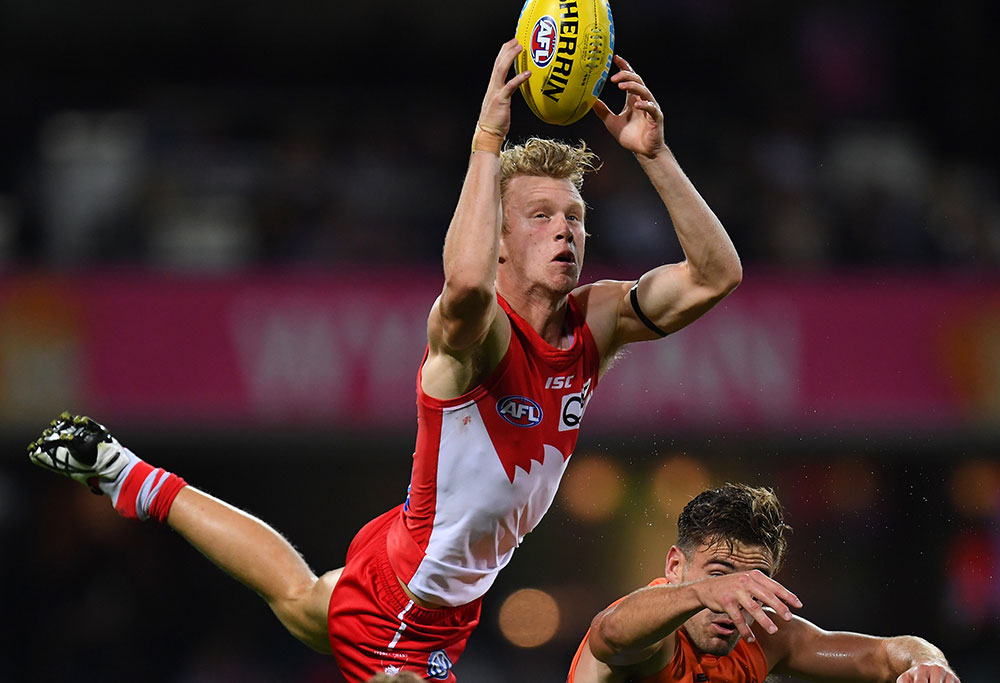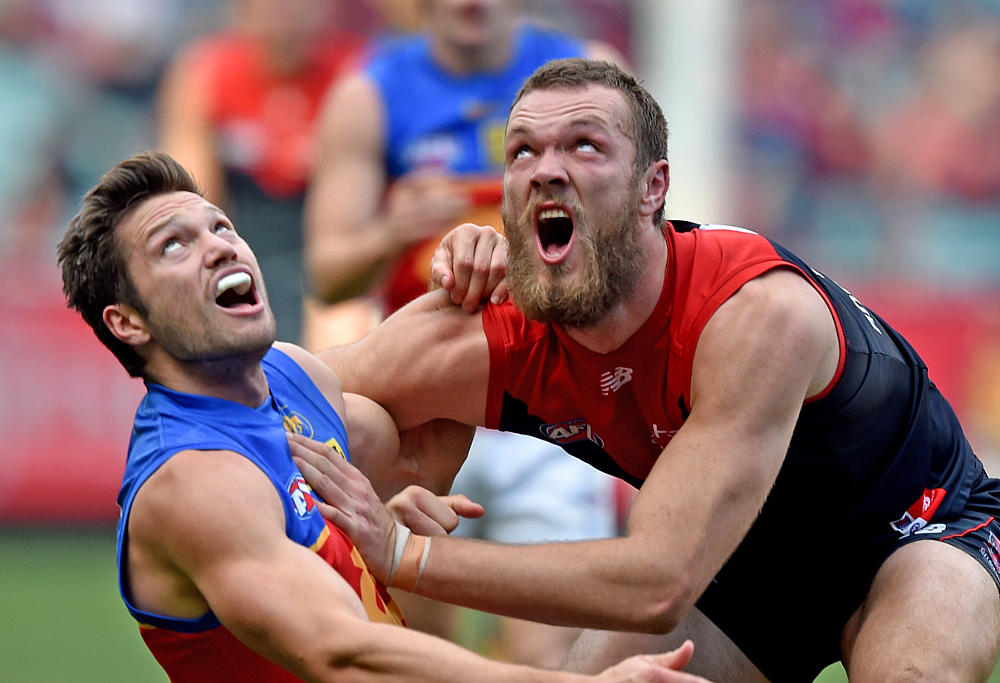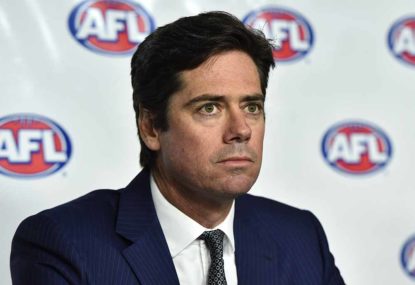Here we are again – it’s late November, and the talk of the AFL town is rule changes. Normally the talk is in response to something material – this year, we’re jumping at shadows.
Around this time of year, there’s always a football story or two kicking around the annual Rules of the Game Committee process. The AFL’s collective obsession with tinkering and piecemeal incrementalism grows stronger by the year.
Tackling techniques, deliberate out of bounds, deliberate rushed behinds, actions in marking contests, prior opportunity, interchange caps, substitutes. All of these things have been tinkered with in the past five years alone – actions and reactions seemingly made with two parts ‘the game just isn’t what it used to be’, one part ‘we have a rules committee that needs something to do’, and a pinch of ‘why not’.
It’s all with the best of intentions of course; to enhance the quality of play on the field.
This year, the rising prevalence of the ‘third man up’ at around the ground stoppages seems to have put someone, somewhere offside. The tactic and its implications are set to be an item on the agenda of the annual AFL coaches’ summit, held this Friday.
There’s an element of foxes in the henhouse when it comes to asking the coaches about laws of the game; albeit in this case there is a very clear limit on the ability of the foxes to wreak havoc. It continues the long tradition of microscopic attention being applied to very specific aesthetics of the game.
The focus on incremental changes to rules and regulations is understandable – if not fully justifiable – in a game where there are so many freedoms. Most other professional sports are much more structured in their operation, interactions regulated because that’s just how their game has always been. Australian rules football is played on a large field with 36 players on it at any one time, and other than the mode of disposing of the ball, it’s something of a free-for-all.

That’s the beauty of the thing, and one of its great assets. But it is also its greatest danger, because of the scope afforded to bend and contort the rules and norms of the game.
More often than not, the innovations that coaches and tacticians derive are seen as an affront to ‘the way the game should be played’. The most glaring example of this was the conservative boundary-line ball movement approach pioneered by Michael Malthouse at Collingwood.
The end game of this was the forward press, which emerged as the dominant strategy across the league in recent years. Boundary line throw ins surged, and in the end HQ’s hand was forced – the deliberate out-of-bounds rule was tightened, reducing the pay-off of moving the ball conservatively down the wings in transition. Players who had taken a mark were given more freedom to move the ball laterally through the expansion of the protected zone around the mark.
It seemed to work – at least qualitatively because the data is, as ever, kept secret (#freethestats) – with more teams content to use the corridor and attack directly. Teams still pressed up, but the extra space afforded, and the change in the relative merits of going straight versus sideways, meant clubs were more content taking risks.
The Western Bulldogs epitomised the results that could be achieved using the game’s new strategic hierarchy. Luke Beveridge’s zone defence remained intact, but rather than trying to ape the Hawks’ aerial attack with ball in hand – as had been the rest of the league’s mode since 2013 – the Dogs became masters of the ground game. Beveridge has been rated by his peers as the best coach two years running, and in case you missed it, his team won the premiership a couple of months back.
It isn’t yet clear whether the Dogs have developed a sustainable competitive advantage – I’m still not sure what happened in September can be explained using logic and fact. Other sides will surely look to follow the leader, as is the way of the league. Rohan Connolly of The Age fleshed this out nicely a fortnight ago.
The Bulldogs example yields two insights: rule changes can have material impacts on the game, and it all comes down to coaching and tactics. That’s not to say the Dogs made it into the top eight, won four straight games as underdogs and broke a 62-year premiership-less streak because of rule changes – but it is to say they were well placed to take advantage of rule changes.
This is a roundabout way of talking about a completely unrelated rule change. Where last year there was a more fundamental challenge – numbers at the ball, and the dominance of the forward press – this year’s round of rule discussions have a tone of ‘well, we have to change something‘.
According to Champion Data, the rate of ‘third man up’ at stoppages increased from around eight per cent of stoppages in 2014 to 13.2 per cent in 2016 – a rise of about 30 per cent per annum.
In response to a request from The Roar’s own Cam Rose, Champion Data revealed some further state secrets regarding the tactic:
There’s a bunch of numbers there, so let me summarise. There is no change in the share of stoppages that result in a clearance to either team. In all, 75 per cent of third-man stoppages result in a clearance, compares to 76 per cent of more traditional contests. There is practically no difference between ball ups and throw ins, either.
One of the purported benefits of the tactic is it helps to ‘clear’ congestion. The numbers say this is likely to be a myth.
There is, however, a clear advantage to the third-man-up team in ball ups (around the ground stoppages) for sides that execute effectively. Teams that manufacture a hit out from a ball up where they have a third man jump win a clearance 44 per cent of the time, substantially more frequently than their opponents (32%). This also compares favourably to conventional ruck contests at ball ups, where the win percentages sat at 39 per cent and 36 per cent, respectively.
By contrast, third man up appears to be negative at throw ins. A team that manufactures a hit out from a boundary throw in where they have a third man up jump wins a clearance 37 per cent of the time, compared to 35 per cent for their opponents. A more conventional set up results in a 42 per cent clearance win rate in the event of a hit out, versus 34 per cent for their opponents.
This tells us not all stoppages are created equal. Without further data it’s hard to dig much deeper, but it suggests the more rapid nature of ball ups relative to boundary throw ins (speeding up the time between stopping the play and getting the ball in the air at ball ups was a directive of the umpiring department two years ago) might contribute to the tactic’s effectiveness. Having less time to structure up creates more variability, and allows players the chance to set up a third man play.
The other caveat is this data doesn’t consider clearance quality: we don’t know how frequently these clearances result in scores. We also don’t know the extent to which going ‘third man up’ is optimal – like most good things, there’s likely to be a point where indulging more and more starts to deliver less and less. This is doubly so given the tactic is by its nature a surprise.
Anywho, third man up has been the talk of the week, and that talk will only heat up following the coaches’ summit. There are strong arguments on both sides of the debate.
In summary, the keepers say restricting the ability for players to contest the ball runs counter to the open ethos of the code. The clampers say it is ugly, and threatens the long-term survival prospects of an already endangered ruckman species.
It will surprise you to learn that I think both sides of the argument have merit. However, the only way forward is for the tactic to be retained with one key tweak.
The death of the ruckman isn’t going to come about as a result of the increasing use of third man up. The more likely mode of extinction will be continued downward pressure on the use of the interchange, and the need for teams to have more flexibility built into their line ups. There were around 55 stoppages per game in 2016, and as long as that number remains above single digits clubs will still need at least one specialist ruckman – and in many cases two are required.

Third man up can produce some weird-looking stoppage situations, and the ensuing play can often prove chaotic. But that’s part of the beauty of the tactic – it’s a change up, and teams that can harness it effectively can weave all kinds of magic.
It can also lead to disaster.
Having few restrictions on the movement of players is one of Australian rules’ founding principles and fundamental tenants. Placing restrictions on the ability for players to go third man up would go against four of the nine guiding principles in the AFL’s own Laws of the Game Charter, written up as a far-less-important-than-the-real-thing Bill of Rights for the code.
The legislative lens alone says this is not something that should be changed. The data says it can be effective when employed in the right situations. The concerns of the clampers are overblown. The ability for players to go third man up at stoppages must be retained.
Post-script: But, we can have our cake and eat it here. Something has to change, otherwise these profligate committees and summits are all for nothing.
Far too often in 2016, umpires were paying blocking free kicks to third man jumpers who were trying to contest but were impeded in a manner normally reserved for midfielders. By too many I mean any number greater than zero, because it shouldn’t happen.
At every stoppage, each team should require a player to raise their hand and designate themselves as the ‘contest ruckman’. This player is unable to be blocked and must have a clear run at the ball, as the rules currently dictate. Every other player in and around the stoppage is subject to normal rules regarding blocking and shepherding – there can’t be any holding or pushing in the back, but otherwise the third man jumper has to be made to work for his hit out.































































































